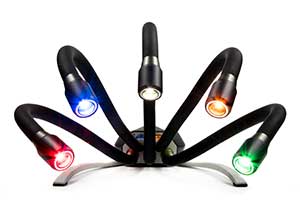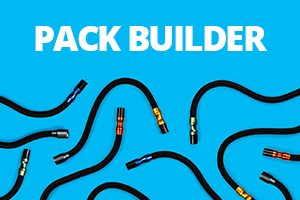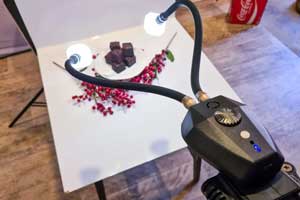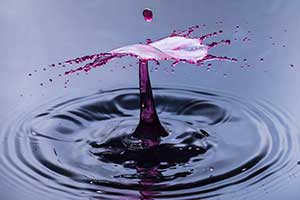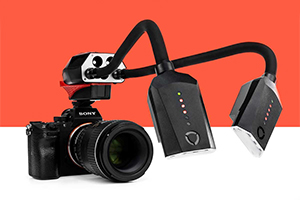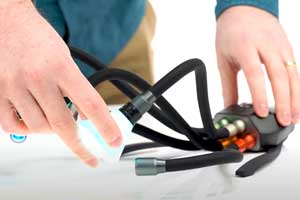Exposure settings – How bright is Adaptalux Lighting – Watch on YouTube

We get asked fairly regularly, how bright is Adaptalux Lighting? For many people, lumen values are not clear in real terms. However, It’s not as straightforward as listing off a set of camera settings you can get. There are simply too many variables. However, in this article, we’re going to remove as many variables as possible to get some average settings to work from for our LED Lighting Arms.
Along the way, we’re going to link some macro photos we have taken throughout the years, with the settings they were taken at. This should give additional context to the kinds of settings we usually shoot at, but make sure to read the caveats below and click through to the articles for more context.
Some caveats
We generally don’t like to be too prescriptive in our tutorials. Describing exact camera settings takes up a lot of time in video tutorials and is generally quite boring. However, most importantly, it’s also not that useful.
It’s not possible to take the same settings we use, plug them into the camera, and get the same image. There are simply too many other factors to consider. For beginners, it’s better to work from the ground up with your own settings and experiment, rather than try to copy the settings we used.
More advanced photographers tend to glaze over settings anyway, it just becomes second nature. However, we do recognise the importance of talking about settings when there they are special or relevant to the technique or specific subject.
For example, we talk about settings a lot when it comes to UVIVF photography. It’s unique and requires long exposures, so using specific settings is super important.
The Variables
So what variables are important to your exposure settings? In other words, what could differ between a shot we get with settings ABC and the XYZ settings you get at home?
Lighting
This is the biggest factor and should be obvious. If you’re using different lighting, you will get different settings. The Adaptalux Studio, which we use for all of our shoots, is specialist lighting for macro photography. You won’t get the same results with a softbox or natural light.
Our lighting can also be adjusted, by intensity, number & type of arms, and use of boost mode.
Subject
Different subjects react to light in unique ways. If your coin is slightly shiney where ours is dull, the settings will differ. If our flower is white and yours is purple, the settings will be very different in order to capture the detail.
Distances
Distance is one of the biggest factors in lighting and settings. If your lights or camera are further away from the subject, your settings will need to change. When working at macro scale, even millimeter changes in lighting position can have big effects on your settings.
Camera & Lens
Using a different camera model and/or lens will also affect your settings. magnification plays a big part in choosing settings for macro photography and simply framing your image slightly differently can mean changing your settings.
Diffusion
Using diffusion materials of different opacities will change the amount of light that reaches your subject, and therefore your camera. It might seem insignificant, but if we diffuse our light and you don’t, you will need different settings to compensate.
How bright is Adaptalux Lighting?
To test our lighting we chose to place our camera at an arbitrary distance of 43cm (17 inches) from an 18% Grey-card (Measured to the front of the camera body). We’re shooting using a Sony A7iii and a Tokina 100mm f2.8 Macro Lens with a Nikon-Sony mount converter.
The camera is set to auto, but ISO is fixed at ISO400 and the aperture is set on the lens aperture ring at f5.6. As we change our lighting, nothing else will change. We will be looking to see the difference in our shutter speed as we move our lights. In reality, you would likely want to balance the changes in exposure between SS, ISO, and Fstop.
We’re testing a few common combinations of Lighting Arms with boost mode on, and increasing the amount of arms as we go.
1x White LED Arm
Distance – 6cm
Brightness – 50%
Undiffused
1/400
f5.6 ISO400
Distance – 14cm
Brightness – 50%
Undiffused
1/100
f5.6 ISO400
Distance – 14cm
Brightness – 50%
Diffusor L2
1/40
f5.6 ISO400
1x White LED Arm-S
Distance – 6cm
Brightness – 50%
Undiffused
1/1600
f5.6 ISO400
Distance – 14cm
Brightness – 50%
Undiffused
1/400
f5.6 ISO400
Distance – 14cm
Brightness – 50%
Diffusor L2
1/80
f5.6 ISO400
2x White LED Arm-S
Distance – 6cm
Brightness – 50%
Undiffused
1/2000
f5.6 ISO400
Distance – 14cm
Brightness – 50%
Undiffused
1/500
f5.6 ISO400
Distance – 14cm
Brightness – 50%
Diffusor L2
1/100
f5.6 ISO400
3x White LED Arm-S (100%)
Distance – 6cm
Brightness – 100%
Undiffused
1/6400
f5.6 ISO400
Distance – 14cm
Brightness – 100%
Undiffused
1/2000
f5.6 ISO400
Distance – 14cm
Brightness – 100%
Diffusor L2
1/500
f5.6 ISO400
As you can see from the results above, a larger distance between your subject and lighting drastically decreases your settings. The Arm-S is more effective close-up with no diffusion, and 3 Arm-S at max brightness makes for a lot of light!
There are far too many combinations possible for us to list them all out, but this should give you an idea of how bright the Adaptalux Studio LED Arms can be. Remember, the Pod 3.0 can hold up to 5 arms at once, so there are even better settings possible if you need the raw power.
Testing the real-term output of our Xenon Flash Arms is another kettle of fish, so that will be for another article if we see the desire for it. In the meantime, the full specs for both flash and LED arms can be found in our help section.
Hopefully, this gives you a bit of an idea of the kind of settings to expect from various LED Lighting Arm configurations. This is not meant to be an exacting experiment, but it should provide a more real terms answer to the question “How bright is Adaptalux Lighting”.
Don’t forget to subscribe to our YouTube channel for more macro photography tutorials, ideas and inspiration!
- Cool paper photography tricks that you should try at home - 14th April 2024
- Egg Macro Photography – Easter Egg Lightpainting - 30th March 2024
- Using Tonic Water to create amazing UV flower photography! - 16th March 2024

